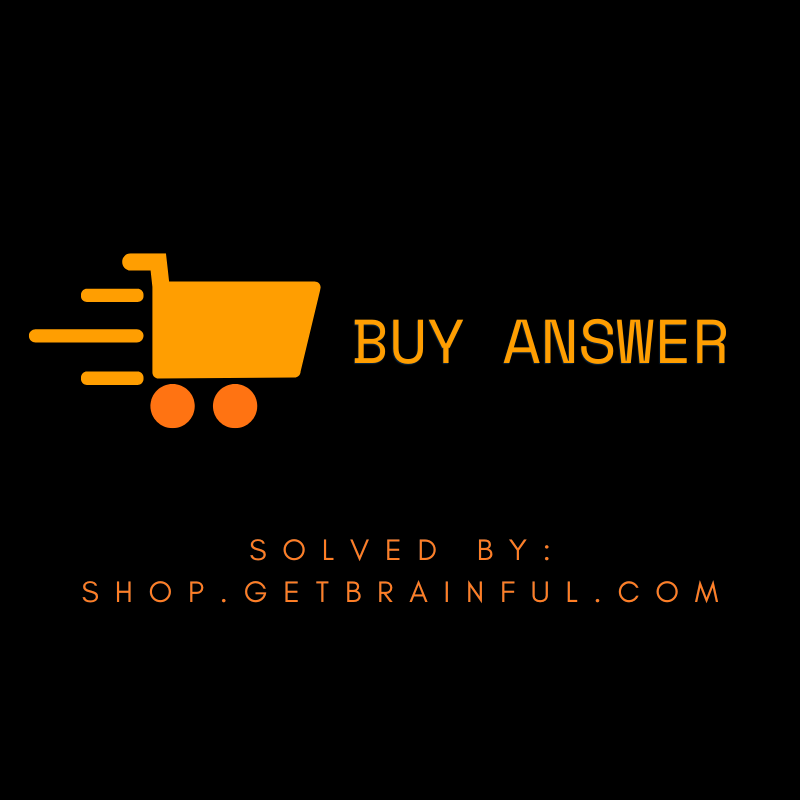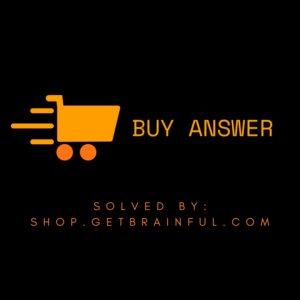BUS-FPX2007 ASSESSMENT 2 INSTRUCTIONS: BUSINESS ENVIRONMENT ANALYSIS
Business Environment Analysis: Target Corporation
Introduction: The Chosen Organization
The retail landscape is one of the most dynamic and competitive sectors in the global economy. Navigating this environment requires a coherent strategy, a flexible structure, and a strong ethical foundation. The chosen organization for this comprehensive business environment analysis is Target Corporation. Established in 1902 and headquartered in Minneapolis, Minnesota, Target has grown into one of the largest and most recognizable mass-market retailers in the United States, operating over 1,900 stores across the nation.
The company’s vast merchandise portfolio spans apparel, home goods, groceries, and electronics, positioning it directly against major competitors like Walmart and Amazon. Target distinguishes itself through a strategic focus on offering high-quality, often exclusive, products at affordable prices while cultivating a distinctly positive and curated customer experience. Its operational approach prioritizes innovation, sustainability, and robust community engagement, solidifying its identity as a forward-thinking retailer. This foundational understanding is essential for the subsequent analysis in this BUS-FPX2007 Assessment 2.
Mission, Vision, and Strategic Alignment
Target’s strategic direction is clearly defined by its mission and vision statements, which serve as the internal compass for all organizational activities and objectives. The company’s formally stated mission statement is: “To help all families discover the joy of everyday life” (Target Brands Inc., 2024, para. 3). This statement is concise, focusing on the customer experience (“joy of everyday life”) and inclusivity (“all families”). It emphasizes the company’s core purpose: to enhance the routine lives of its guests by making quality, affordable, and desirable products accessible.
The complementary vision statement is: “To co-create an equitable and regenerative future together with our guests, partners and communities” (Target Brands Inc., 2024, para. 1). This forward-looking statement sets a high bar, shifting the focus beyond mere transactions to long-term impact, encompassing sustainability (“regenerative”) and social equity (“equitable future”). The inclusion of “co-create” underscores a collaborative approach involving all major stakeholders, providing a broad strategic guideline that informs long-term planning, particularly in areas like supply chain management and environmental responsibility. This strategic coherence is a key focus of the BUS-FPX2007 Assessment 2.
Key Components of the POETS Framework
Analyzing the mission and vision statements through the POETS framework reveals their distinct components:
- Purpose: The central purpose is encapsulated in the mission—to bring joy to everyday family life. This drives the retail focus on aesthetically pleasing stores, desirable products, and reliable service.
- Operations: Target’s operations reflect these values through strategic product variety (often including higher-margin exclusive brands), responsible sourcing, and strong community engagement programs.
- Evaluation: The effectiveness of the mission is evaluated through metrics such as customer satisfaction scores, brand loyalty, growth in online and in-store traffic, and financial performance. The vision’s success is evaluated through measurable sustainability goals, such as waste reduction and renewable energy adoption.
- Significance: Both statements highlight Target’s significance beyond simply selling goods. The mission defines its value proposition to the customer, while the vision cements its commitment to long-term societal and environmental well-being, which is increasingly vital for corporate image and investor relations. Examining these elements provides depth to this BUS-FPX2007 Assessment 2.
Ideal Organizational Structure
For an organization of Target’s scale, product diversity, and geographic reach, the ideal organizational structure is the divisional structure, which the company currently employs. This structure organizes operations around distinct divisions, typically based on product categories (like Apparel, Electronics, and Home Goods) and geographic regions (U.S. regional stores).
This structural choice is highly beneficial for several reasons. Firstly, it allows for specialization and focus. Each product division can develop specific expertise, manage tailored supply chains, and execute marketing campaigns optimized for its unique merchandise category. This prevents the “one-size-fits-all” approach common in purely functional structures, which would be detrimental to a retailer selling both groceries and high-fashion items. Secondly, the divisional structure facilitates faster decision-making and accountability.
When a division is underperforming or a new market opportunity arises (e.g., launching a new exclusive home line), the divisional leadership has the autonomy to respond quickly without waiting for central authority approval on minor operational details. This supports the dynamic nature of retail. This organizational design directly influences the efficiency examined in this BUS-FPX2007 Assessment 2.
The divisional structure aligns perfectly with the POETS principles:
- Purpose (P): Divisions are small enough to maintain focus on the core mission of enhancing the guest experience within their specific product areas.
- Operations (O): Operations are streamlined and localized, allowing for optimized inventory management and logistics tailored to regional demand or product type.
- Evaluation (E): Performance metrics can be clearly assigned and evaluated at the divisional level, making it easier to identify and address bottlenecks or successes.
- Significance (S): The structure maintains overall brand significance while allowing individual divisions to demonstrate responsiveness and relevance to specific market segments, a necessity for a successful retailer being analyzed in this BUS-FPX2007 Assessment 2. The corporate division—covering functions like Marketing, Finance, and HR—then acts as the centralized strategic governance layer, ensuring overall consistency and resource allocation across all product and geographic
divisions.
Business Environment Analysis (PESTEL and Micro)
Understanding the external context is crucial for Target’s long-term viability. Analyzing the business environment involves looking at both the macro-level forces (PESTEL) and the micro-level competitive forces.
PESTEL Analysis
The macro-environment presents both opportunities and threats:
- Political: Trade policies, tariffs, and government regulations on data privacy (like CCPA) directly impact Target’s vast supply chain and e-commerce operations.
- Economic: Inflation, interest rates, and consumer confidence significantly affect discretionary spending. As a mass retailer, Target’s performance is closely tied to the economic health of the U.S. consumer.
- Socio-cultural: Shifts towards health, wellness, and environmental consciousness (sustainability) create opportunities for private-label growth and necessitate ethical sourcing, aligning with Target’s vision statement.
- Technological: The rise of Artificial Intelligence (AI) for supply chain optimization, personalized marketing, and the demand for seamless omnichannel experiences (in-store and online integration) are critical for competitive advantage.
- Environmental: Increased public pressure and regulatory focus on carbon footprints, waste management, and sustainable materials demand continuous investment in Target’s regenerative goals. This environmental commitment is a growing focus area for any large retailer, a central theme of this BUS-FPX2007 Assessment 2.
- Legal: Labor laws, particularly regarding minimum wage and unionization efforts, directly impact operational costs and HR strategy.
Micro-Environment (Competitive Forces)
In the micro-environment, competitive intensity is extreme:
- Threat of New Entrants (Low to Medium): While setting up a physical retail footprint is costly, the threat from new e-commerce entrants (like specialized direct-to-consumer brands) is constant, challenging Target’s market share in specific product categories.
- Bargaining Power of Suppliers (Medium): For unique, exclusive brands, Target has significant power. However, for essential, high-volume commodities (like produce or major electronics brands), supplier power can be moderate, especially for high-demand goods.
- Bargaining Power of Buyers (High): Consumers have immense choice (Amazon, Walmart, specialty stores) and low switching costs, driving constant price competition and the demand for superior service and convenience.
- Threat of Substitutes (High): Products from direct competitors (Amazon Prime, Walmart+) and non-traditional substitutes (e.g., subscription boxes, meal kits) constantly threaten Target’s core offerings, forcing continuous differentiation. Managing these threats is paramount for the completion of this BUS-FPX2007 Assessment 2.
- Competitive Rivalry (Very High): The rivalry between Target, Walmart, and Amazon is intense, based on price, convenience, exclusive products, and technological innovation.
Code of Ethics and Stakeholder Responsibility
A robust Code of Ethics is non-negotiable for a major corporation. Target’s Code of Ethics is grounded in principles such as integrity, respect, accountability, and compliance with all applicable laws and regulations. The fundamental components of its code typically include standards for:
- Employee Conduct: Guidelines on professionalism, harassment, and workplace safety.
- Conflict of Interest: Rules preventing employees from using their position for personal gain or favoring outside business interests.
- Data Protection and Privacy: Strict standards for handling sensitive customer and company data, addressing the PESTEL technological and legal factors.
- Fair Treatment and Diversity: Commitment to equal opportunity and fostering an inclusive workplace culture.
- Sustainability and Responsible Sourcing: Mandates regarding ethical labor practices in the supply chain and environmental stewardship.
The significance of having a Code of Ethics is multifaceted. It provides a moral compass that guides employees through complex decisions, promotes responsible behavior, and ensures legal compliance, thereby mitigating corporate risk. More strategically, it builds and protects the company’s brand reputation. In an age of instant digital feedback and social media scrutiny, trust is a critical asset.
An organization’s ethical stance directly influences the confidence of its key stakeholders—investors, customers, and partners—ensuring long-term organizational success through transparent and responsible business operations, as highlighted in this BUS-FPX2007 Assessment 2. The ethical commitment is directly linked to the vision of co-creating an equitable and regenerative future.
Stakeholder Management
Target must continuously balance the needs of its diverse stakeholders.
- Customers (Guests): They expect quality products, fair prices, and a convenient, enjoyable shopping experience, which Target delivers through its differentiated merchandise and seamless omnichannel execution.
- Employees: They require competitive wages, benefits, and a respectful, safe work environment, guided by the Code of Ethics.
- Suppliers/Partners: They demand fair contracts, timely payments, and clear communication, particularly regarding ethical sourcing standards and sustainability goals.
- Shareholders: They require strong financial performance, consistent profitability, and long-term strategic growth driven by responsible governance and ethical practices. The ability to manage these competing demands determines overall market success, concluding the analytical portion of this BUS-FPX2007 Assessment 2.
Conclusion
Target Corporation operates as a highly strategic, market-responsive retailer whose success is driven by the alignment between its aspirational mission and vision, its flexible divisional structure, and its unwavering commitment to an ethical code. The external environment analysis reveals that the primary challenges lie in navigating intense competitive rivalry, adapting to rapid technological advancements, and meeting increasing demands for environmental responsibility.
By utilizing a divisional structure, Target maintains the agility required to innovate and respond to these dynamic forces while ensuring that all operational decisions remain tethered to its core purpose of helping families discover the joy of everyday life. This comprehensive approach to governance, operations, and ethics positions Target well for continued growth and market leadership within the ever-evolving retail sector.
RELATED: BUS-FPX1011 ASSESSMENT 2 INSTRUCTIONS: EXAMINING THE CHARACTERISTICS NEEDED FROM AN EFFECTIVE SALES MANAGER
Order This Paper



Reviews
There are no reviews yet.